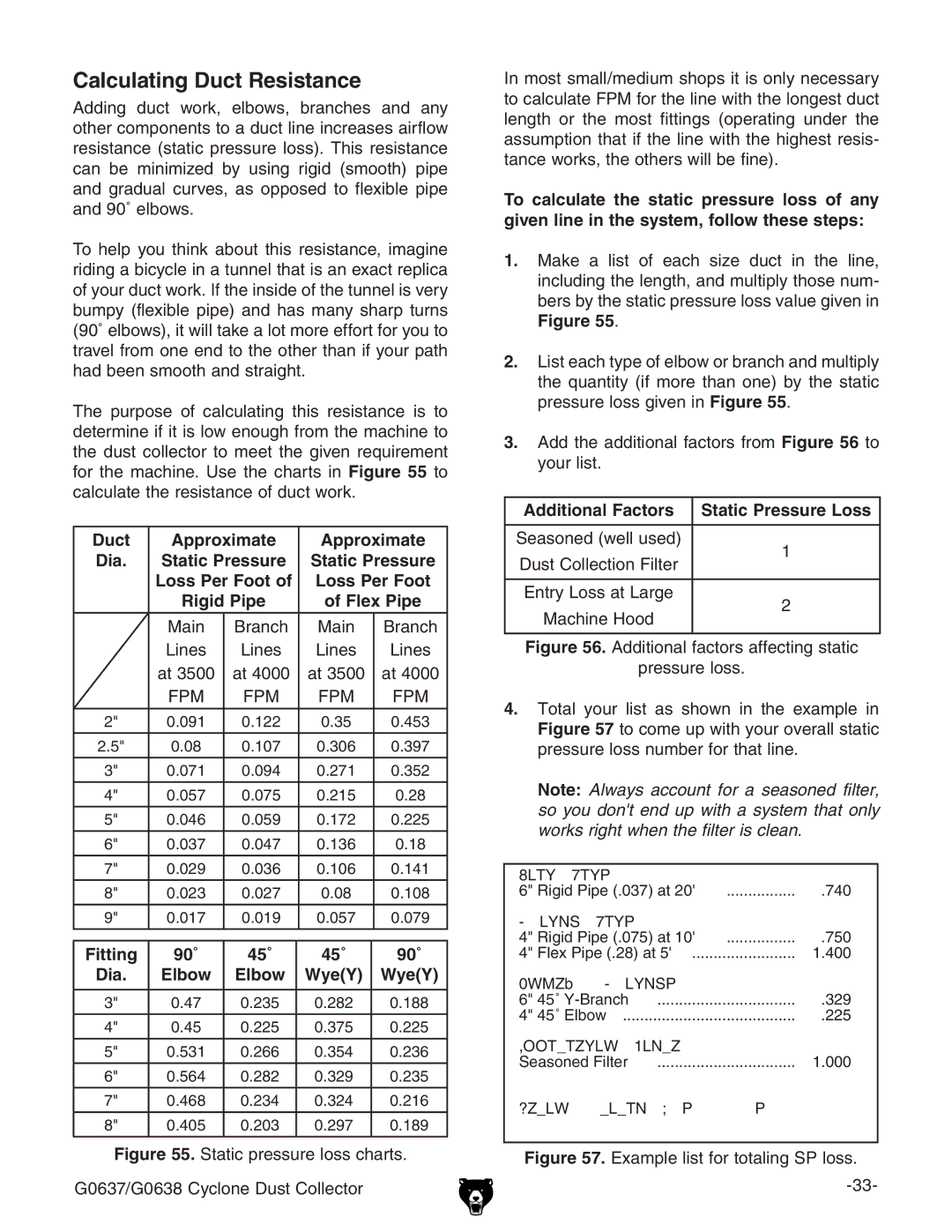G0638, G0637 specifications
The Grizzly G0637 and G0638 are two robust woodworking machines designed to cater to both amateur woodworkers and seasoned professionals. These models stand out for their precision, durability, and versatility, making them ideal for various woodworking applications.One of the main features of the Grizzly G0637 is its powerful 3 HP motor, which provides ample power for cutting through different types of wood with ease. This capability makes it suitable for heavy-duty tasks, including jointing and planing thick lumber. On the other hand, the G0638 model boasts a twin-knife cutterhead for enhanced efficiency, providing smooth finishes and improved stock removal rates. This feature is particularly useful for woodworkers who require high-quality outputs in less time.
When it comes to technology, both models incorporate advanced engineering principles to ensure operational stability. The Grizzly G0637 features a precision-ground cast-iron table designed for flatness, contributing to accurate results. This table is also fitted with an integrated dust collection system, which helps maintain a clean workspace by minimizing sawdust accumulation during operations. The G0638 model enhances this design with a spiral cutterhead, featuring multiple carbide inserts that provide a cleaner cut and longer life than traditional blades.
Another notable characteristic of both models is their user-friendly design. The height adjustment knobs are conveniently placed for easy access, allowing users to quickly adjust the cutting height without disrupting workflow. Additionally, both machines are equipped with oversized handwheels that enable fine adjustments, ensuring that every cut meets precise specifications.
Safety is another important aspect of the Grizzly G0637 and G0638 models. Each machine includes features such as anti-kickback pawls and blade guards, which promote safe operation while handling various stock types. The solid construction of these machines also minimizes vibrations, further enhancing stability and safety during use.
In conclusion, the Grizzly G0637 and G0638 represent the pinnacle of woodworking machinery, combining power, precision, and user-friendly features. Their innovative technologies and solid construction make them a valuable addition to any workshop, allowing woodworkers to achieve exceptional results in their projects. Whether you're jointing edges or planing surfaces, these machines are designed to enhance performance and elevate craftsmanship.

